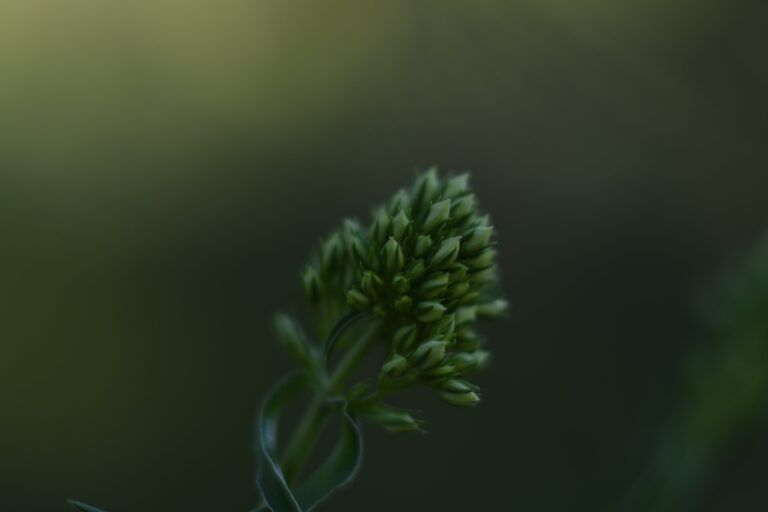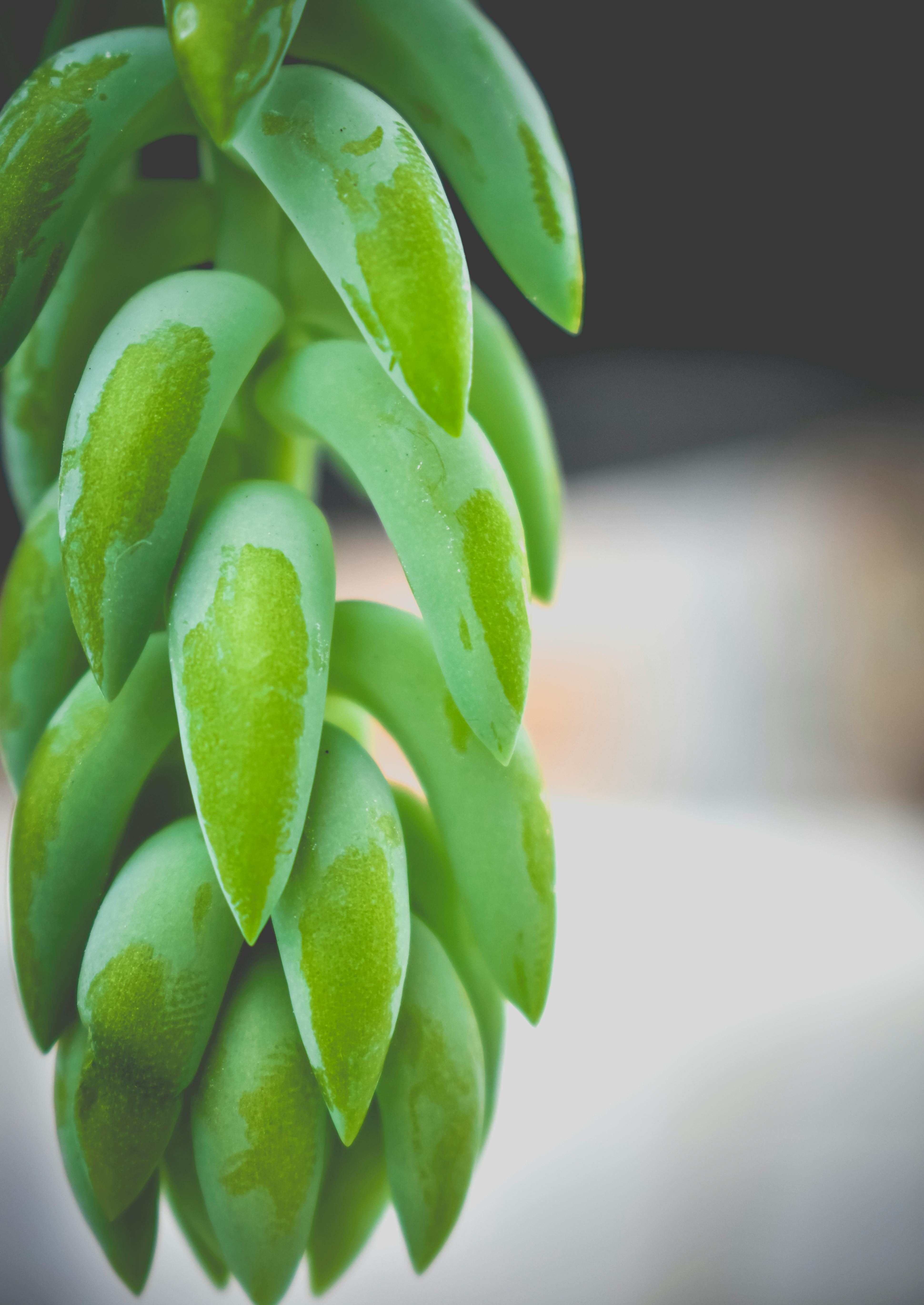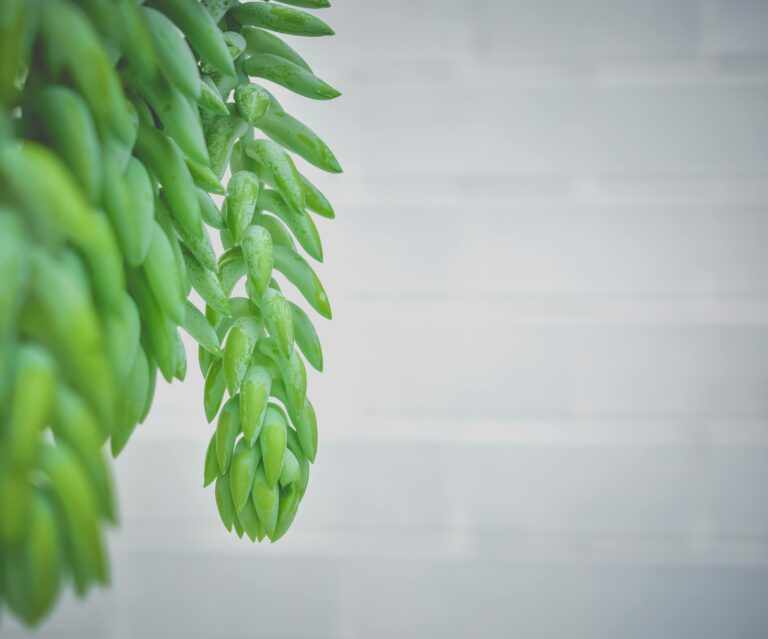Introduction to Sedum Propagation
Imagine transforming a single succulent into a lush tapestry of texture and color, simply by mastering the art of sedum propagation. For the uninitiated, this might sound like a horticultural myth, but delightfully, it’s a reality within reach. The sedum, a trooper in the succulent world, is not just a pretty face; it’s a propagator’s dream, beckoning garden enthusiasts to explore its potential for garden enhancement.
Take Susan, for example, a backyard gardener who decided to dabble in the magic of sedum propagation. With a few snips and some patience, she turned her solitary sedum into a sprawling groundcover that buzzed with pollinators and brought new energy to her outdoor oasis. It’s these real-life examples that whisper a simple truth: sedum is not just a plant—it’s a possibility.
Sedum’s Secret: Easy Propagation for Every Gardener
Now, you might think that such gardening feats require green thumbs honed through years of trial and error. Yet, sedum is forgiving and generous, even to novice gardeners. Its adaptability and resilience make it an ideal candidate for propagation. Whether you’re populating a rock garden or crafting a container masterpiece, sedum slips easily into any role, thanks to its diverse varieties and propagation friendliness.
If you’re also eager to learn more about general gardening tips and how they apply to succulents like crassula ovata, be sure to explore our other insightful guides that cater to plant enthusiasts of all levels.
Curious to see how it’s done? Here’s a sneak peek into the sedum propagation process with a helpful visual guide. Watch and learn as each step unfolds, transforming a simple sedum leaf into a full-fledged, root-sprouting wonder. Let’s dive in!
What Makes Sedum Suitable for Propagation?
When it comes to successful plant multiplication, sedum is a gardener’s dream come true. This hardy succulent possesses an extraordinary ability to regenerate from the smallest of sections, making it an ideal candidate for propagation. So, what’s the secret behind its reproductive prowess? Let’s dig into the gritty details and uncover the magic that makes sedum the poster child for plant propagation.
Sedum plants, often referred to as stonecrop, are the Houdinis of the botanic realm. Their thick, fleshy leaves store water, allowing them to withstand even the most forgetful gardener’s neglect. As if their resilience wasn’t enough, these tenacious troopers can sprout new roots from just a leaf or stem cutting, embarking on a journey to become a full-fledged plant all over again. They’re not picky either; whether it’s a sunny windowsill or a shady nook in your garden, sedum will thrive.
Envision breaking off a piece of sedum; you might think it’s curtains for that little guy, right? Wrong! It’s fascinating to witness how these green fragments take on a life of their own. Place them on well-draining soil, and in no time, you’ll notice tiny roots reaching out, eager to anchor into their new home. This spectacular event isn’t just hearsay—it’s a propagation phenomenon well-documented by succulent enthusiasts across the globe.
Don’t just take our word for it; check out this insightful which delves into the world of sedum propagation and shows you the step-by-step process in action.
Perhaps you’re mulling over the idea of expanding your own succulent sanctuary. In that case, sedum is your go-to green buddy. If you’re keen to broaden your horizons beyond sedum, explore our comprehensive guide on thriving succulent tips, where you can find invaluable advice on nurturing a variety of succulent species to perfection.
Now, let’s address the elephant in the room: What makes sedum such an unmatched champion of multiplication? It’s their undemanding nature, coupled with their robust growth habit. In the plant world, sedum takes the cake for being low-maintenance yet generously rewarding. They don’t demand constant attention or pampering; give them a bit of love, and they’ll multiply before your eyes. In the ever-busy lives we lead, sedum offers a delightful snippet of nature that grows at our own pace.
In conclusion, propagation might seem like a daunting task reserved for the green-thumbed experts, but sedum defies that notion. With its forgiving demeanor and effortless propagative abilities, it opens up a world where creating life is as simple as a snip and a plant. So, go ahead, give sedum a try—you might just find yourself mesmerized by the propagation wonder that unfolds.
Propagation Methods for Sedum Plants
Embarking on the journey of propagating sedum plants is a gardener’s delight, promising a fruitful endeavor that materializes in a verdant spread of these hardy succulents. Each method of propagation offers a unique way to multiply your beloved sedums, and here, we’ll introduce the main avenues for creating an abundance of these resilient plants.
Leaf Cuttings: A Simple Snip Can Spark New Life
The simplicity of leaf cuttings is mesmerizing, allowing you to multiply your sedums with minimal effort. Much like a phoenix rising from the ashes, a single leaf has the potential to transform into a flourishing plant. Just detach a healthy leaf, let it callous over for a day or two, and then nestle it atop well-draining soil. Keep the soil lightly moist and in a few weeks, you’ll witness the birth of new roots and shoots. Here’s a video showcasing the magical journey of a sedum leaf cutting finding its way into a full-grown plant.
Stem Cuttings: The Fast Track to Lush Growth
Stem cuttings are your fast pass to a lush, green tapestry. Select a sturdy stem, slice it below the node, and voilà, you’re well on your way. Plant the cutting into a mixture of potting soil and perlite, and ensure it receives bright, indirect sunlight. The key to success is in the care you provide during these budding moments of growth.
For garden enthusiasts looking to expand their knowledge beyond sedum, consider exploring our collection of succulent care tips. This treasure trove of information is tailored to help your other succulents flourish alongside your budding sedum nursery.
Division: Doubling Your Garden’s Beauty
Division, a more hands-on approach, involves separating a sedum plant into smaller units. It’s advisable to undertake this process in spring, just as new growth emerges. Excavate your sedum, shake off excess soil, and gently tease apart the roots. Each section you separate should have a generous amount of roots attached. Replant promptly and water sufficiently to encourage root establishment in their new homes.
Step-by-Step Guide to Propagating Sedum from Cuttings
So you’ve been eyeing that lush, teal-color Stonecrop in your garden and wondering if you can share its beauty by creating more? Absolutely! Propagating sedum plants from cuttings is practically a gardener’s rite of passage. Let’s dig into how you can multiply your succulents with ease and a touch of flair.
First things first, timing is crucial. Springtime is a sedum’s sweet spot for snipping because that’s when new growth is sprouting, begging for a chance at independence. So grab your shears and let’s give those hopeful shoots a new lease on life!
Once you have identified a healthy sedum ready for surgery, search for a shoot that’s saying, “Pick me!” with about 2 to 5 inches of length and a couple of leaves. Snip it right at the base, and voilà, you have your cutting! But hold up, don’t plant it just yet. Let the cutting callous over for a few days in a warm, dry spot. It might sound like we’re procrastinating, but trust me, this step helps fend off any cunning pathogens eyeing your precious cutting.
Now, take your calloused cutting and dip it into some root hormone. Think of it as giving your sedum a superpower to sprout roots like a champ. Gently nestle your imbued cutting into a well-draining soil mix, typically a combo of potting soil and perlite or sand. These cuttings prefer a climate like a Mediterranean diet, light and airy. Make sure the soil is as welcoming as a soft bed after a long day, but not overbearing like a soggy hug!

Watering is key in this budding relationship. Moisture is your cutting’s BFF, but be cautious not to drench it in affection. A light spritz of water to keep the soil slightly damp is perfect. Within a few weeks, roots will embrace the soil, holding on tight like a baby koala. Alright, maybe I’m getting a bit sentimental here, but witnessing roots take hold is truly a moment!
Once those roots have established their new home, you’ll notice your sedum starting to grow and flourish. Before long, it’ll be like the original plant’s mini-me, ready to rock your garden or windowsill.
For the inquisitive minds craving more juicy details on sedum care and propagation, feel free to delve into a treasure trove of information in this comprehensive guide. It’s packed with wisdom that’ll turn you into a sedum whisperer in no time.
And there you have it, my green-thumbed friends! With a few simple snips, some patience, and a sprinkle of TLC, sedum propagation is a delightful journey from a lone cutting to a bountiful, verdant cluster. Happy gardening!
Caring for Your Sedum Cuttings
Now that you’ve got your sedum cuttings, the real fun begins! You’re embarking on a delightful journey to turn these little snippets into a full-blown succulent sensation. But as with all precious things in life, your cuttings will need some tender loving care to thrive. Let’s dive into the nurturing world of sedum propagation and transform these bits into bountiful beauties!
Getting the Basics Right
First things up: environment. Your sedum cuttings prefer a cozy spot with indirect sunlight. Think of them as sunbathers who enjoy the shade—you want them to bask in the light without frying their delicate leaves. A north-facing windowsill? Perfect. That dappled shade spot on your patio? Even better. A place where they can enjoy the morning sun’s gentle caress? Ideal!
Watering is another key step many succulent parents get wrong. These aren’t your thirsty marigolds; sedum cuttings like to dry out between drinks. The touch test never fails—poke the soil, and if it’s dry a few centimeters down, it’s time to quench their thirst. Overwatering is like buying them a one-way ticket to Root Rot City, and nobody wants that.
Nourishing Your Plantlets
While your cutings are busy putting down roots, they’ll need a bit of food—nothing too heavy, think of it like a tasty appetizer. A diluted half-strength succulent fertilizer is your golden ticket here. It’s like giving them a miniature feast of nutrients that will encourage those roots to explore and leaves to flourish.
Once your cuttings start showing signs of growth—a tender root here, a plump leaf there—it’s an open invitation to introduce them to a pot with succulent-appropriate soil. Give them a home that drains faster than a sink with no plug. This way, they don’t sit in moisture any longer than necessary. In the wild, sedums aren’t lounging in marshlands—they’re perched on rocky outcrops, waving at the sun.
Patience is a virtue when it comes to sedum propagation. Sometimes, the cuttings take their sweet time, and that’s okay. Think of them as mini garden gurus teaching you the art of zen gardening. Before you know it, you’ll have an array of rooted sedums that resemble a green tapestry crafted by nature itself.
And remember, propagation is a bit of an experiment—some cuttings may not make it, but that’s part of the learning curve. The failures make the successes that much sweeter, like the first bite of a ripe peach on a sweltering summer day. So stay curious, nurturing, and watch your mini sedum empire expand!

Keep these tips in mind, and your cuttings will be the talk of the town (or at least, the envy of your plant-loving friends). And who knows? Maybe one day, your sedum patch will be the lush backdrop for garden parties and serene afternoons, a verdant testament to your green thumb and propagation prowess. Happy planting!
Troubleshooting Common Issues in Sedum Propagation
So, you’ve decided to dive into the world of sedum propagation – bravo! These resilient succulents can usually be multiplied with ease, but sometimes, they toss us curveballs. Let’s troubleshoot together so your sedum can thrive and multiply like bunnies in a meadow.
Striking Out with Stem Cuttings?
If your sedum stem cuttings are more flop than pop, you might be cutting at the wrong time. Aim for a sunny morning when the plant’s energy is at its peak. And remember, those cuttings prefer well-drained soil and a touch of rooting hormone powder to really get the party started. A little patience goes a long way, so give your cuttings a couple of weeks to show signs of life.
Leafy Letdowns
Leaf propagation can be tricky. Sometimes the leaves shrivel up before they even think of sprouting roots. The trick is to lay them on top of the soil, not bury them. A tad bit of water now and then keeps them perky, but too much enthusiasm with the watering can spell disaster. Think of it as a first date – too much attention might scare them off!
Root Rot – The Silent Killer
Now, let’s talk about the sneaky villain of sedum propagation – root rot. It creeps in when we love our little green friends a bit too much, giving them more water than they need. Sedums are tough cookies; they’re more camel than goldfish. So, if your sedum’s roots are turning to mush, it’s time to back off with the H2O and let the soil dry out.
For those visual learners, here’s a handy video that gives a glimpse into the easiest ways to propagate your sedum and steer clear of these common hiccups:
Pests, Be Gone!
Pests are like that one uninvited guest at a garden party – they show up and just won’t leave. Aphids and mealybugs can be particularly clingy when it comes to sedum. A simple soap and water spray should send them packing. And for the eco-friendly gardeners, introducing ladybugs can be like hiring bouncers for your sedum soiree.
Remember, propagation is more art than science. Sometimes it’s smooth sailing, and other times it’s like herding cats. Keep these tips in mind, and your sedum propagation journey will be less about the pitfalls and more about the proliferation. Happy gardening!
When is the Best Time to Propagate Sedum?
Ever stand in your garden, hands on hips, pondering when the stars will align for you to multiply your beloved sedum collection? Well, align your green thumbs, because the best time to propagate sedum is – drumroll, please – during the warm embrace of spring or the early touch of summer. That’s right; this is the season when Mother Nature wakes up all her sleepy plants, giving them the best shot at flourishing.
Why spring or early summer, you ask? Simple. It all boils down to the sedum’s natural growth cycle. These little succulent wonders come out to play when the temperature begins to rise, basking in the longer daylight hours. They’re soaking up the sun and are chock-full of energy – perfect for starting their journey to new beginnings. Plus, the warmth provides the ideal cozy environment for roots to take hold without the threat of frost nipping at their heels.
Picture this: you’re in your garden, the scent of fresh growth in the air, and you’ve got your clippers ready. You snip off a healthy piece of sedum right as the morning dew winks at you from the leaves – this is prime time for propagation! The cuttings are eager to root, and the soil is warm enough to welcome them. It’s not just a plant; it’s a plant in paradise.
But let’s get real – nature doesn’t always stick to the calendar. If you’re living somewhere where the climate is like a perpetually sunny day in California, you might be able to propagate sedum almost all year round. The rule of (green) thumb? Keep an eye on the weather and ensure that the conditions resemble a warm spring day.
So grab your succulent friends and mark your calendars. Spring showers not only bring May flowers – but they also pave the way for a cradle of new sedum babies, ready to grow with vigor. Watch them closely, and you’ll see the magic happen right before your eyes.
And if you’re more of a visual learner, there’s something special for you. Check out this fantastic video and get an up-close and personal look at the propagation process:
Remember, propagating sedum isn’t just about multiplying your garden – it’s about spreading the joy. Each cutting has the potential to become a whole new plant, offering a fresh perspective and a burst of life wherever it takes root. It’s like each little leaf is whispering, “Can sedum be propagated? Watch me!”
Maximizing Success: The Ideal Environment for Propagation
Sedum, the resilient and picturesque succulent, has a remarkable talent for propagation, a trait that thrives in the right conditions. Embarking on a sedum propagation journey? Let’s create that perfect nursery for your new plantlets to flourish. Like a Michelin-starred chef’s recipe for an exquisite dish, the propagation of these plants requires a precise blend of elements.
Shine a light, but not too harshly. Sedums are sun-lovers, but during propagation, it’s important to avoid direct, scorching rays that could frazzle their delicate new growth. Aim for bright, indirect sunlight — the kind that bathes the plant in a warm glow without turning it into a succulent sun-crisp. Imagine the dappled morning light under a tall oak, providing the perfect luminance for young sedums to bask and grow.
Humidity: it’s a balancing act. These succulents don’t need tropical levels of moisture in the air, but they do appreciate a bit of humidity to keep their tiny roots hydrated. If you’re propagating indoors, consider a humidity tray or a regular misting session. Think of it like a spa day for plants, where the air is just moist enough to keep their skin — ahem, leaves — supple and vibrant.
Now let’s talk about the Goldilocks zone for temperature. Sedum wants it just right — not too cold, and not too hot. The ideal range lies between 65-75 degrees Fahrenheit (18-24 degrees Celsius). It’s the kind of comfortable day where you’d lounge in your backyard, perhaps enjoying a refreshing iced tea, and your sedum would be right there with you, soaking up the ambiance.

Creating these ideal conditions is like setting the stage for a grand performance where each sedum cutting stars in its own growth story. By paying attention to the nurturing details of light, humidity, and temperature, you can turn your propagating endeavor into a triumphant tale of green abundance. Remember, with the right environment, your sedum can do more than just survive; it can thrive, proliferate, and become a lush testament to your gardening prowess.
Transplanting and Beyond: The Next Steps After Propagation
So, you’ve managed to propagate your sedum successfully – kudos! But what comes next? Well, it’s time to dive into the transplanting process and learn how to nurse these young offshoots into thriving, full-grown beauties. Let’s roll up our sleeves and transform these cuttings into the stars of your succulent collection.
Imagine yourself as the guardian of tiny green lives, each cutting bursting with potential. Your first order of business is to secure a cozy new home for these babes. Pick a pot with good drainage and fill it with a succulent-friendly potting mix – think of it as a feather bed for roots. Gentle and breathable, it’s the perfect environment for young sedums to anchor down and shoot up.
Now let’s talk transplanting: think of it as moving day. Carefully nestle each rooted cutting into the potting mix, tucking them in with the tender touch of a botanical parent. Make sure they are not too deep – just enough to support them to stand tall and proud. Water sparingly; after all, they are desert-born plants with a taste for the dryer side of life.

Once the move is complete, it’s all about the after-care. These young plants are like toddlers; they need a watchful eye, but not the helicopter treatment. Sunlight? Yes, please – a spot where the morning rays can give them a gentle nudge awake. Over-watering is a no-go; make it a light sprinkle to quench their thirst without drowning their roots. Patience is key as they ease into their new digs and start to flourish.
Now just picture it: In time, your sedum will blossom into a mound of lush, vibrant foliage, a testament to your green-thumb wizardry. You’ll watch in pride as your once-tiny cuttings become the envy of plant lovers far and wide, all rooted in the simple act of propagation. Success in sedum cultivation? Absolutely – and you’ve got the thriving plants to prove it.
Happy Growing: Beyond the Basics
Transplanting is just the first step in a journey of plant parenthood. There’s a beautiful road ahead, paved with succulent success and dotted with leafy milestones. And who knows? Perhaps you’ll soon be sharing cuttings with friends, spreading the sedum love, and propagating your gardening passion one succulent at a time. Happy growing!
Frequently Asked Questions
Embarking on the journey of sedum propagation is like unlocking a treasure trove of succulent splendor. But, with this exciting quest come many questions. Let’s delve into the vibrant world of sedums and shed light on some common curiosities.
How Fast Does Sedum Root?
Sedum’s speed in striking roots can be quite astonishing. Picture a sprinter dashing through the finish line — that’s how some gardeners describe the rooting vigor of these resilient plants. Within a mere few weeks, you might start witnessing tiny roots embracing the soil with gusto. This rapid growth is one hallmark that makes sedum an endearing choice for both novice and seasoned plant enthusiasts.
Can Sedum Be Propagated in Water?
Water propagation might sound like a modern-twist fairytale for plants, and sedum doesn’t shy away from it. In a world where succulents generally prefer dry land, sedum stands out. A cutting immersed in water gradually sprouts roots, as if it’s drawing life from the aquatic realm itself. It’s a spectacle of nature that enthralls many who witness this lush transformation.

Encouraging Growth in Sedum
Boosting sedum’s growth is akin to nurturing a budding athlete — it’s all about the right mix of support and freedom. A light touch of soil or a sprinkle of water might seem inconsequential, but to sedum, it’s a hearty meal. As roots grip the mix, tiny leaves unfurl like flags of victory in nature’s constant race for survival. By providing a well-draining soil mix, ample sunlight, and occasional watering, you’re setting the stage for sedum to thrive spectacularly.
Remember, each sedum is a living testament to the resilience and adaptability of nature. As you explore the propagation potential of these succulent marvels, embrace the opportunity to connect with the earth and be part of the ever-surprising tapestry of life.



